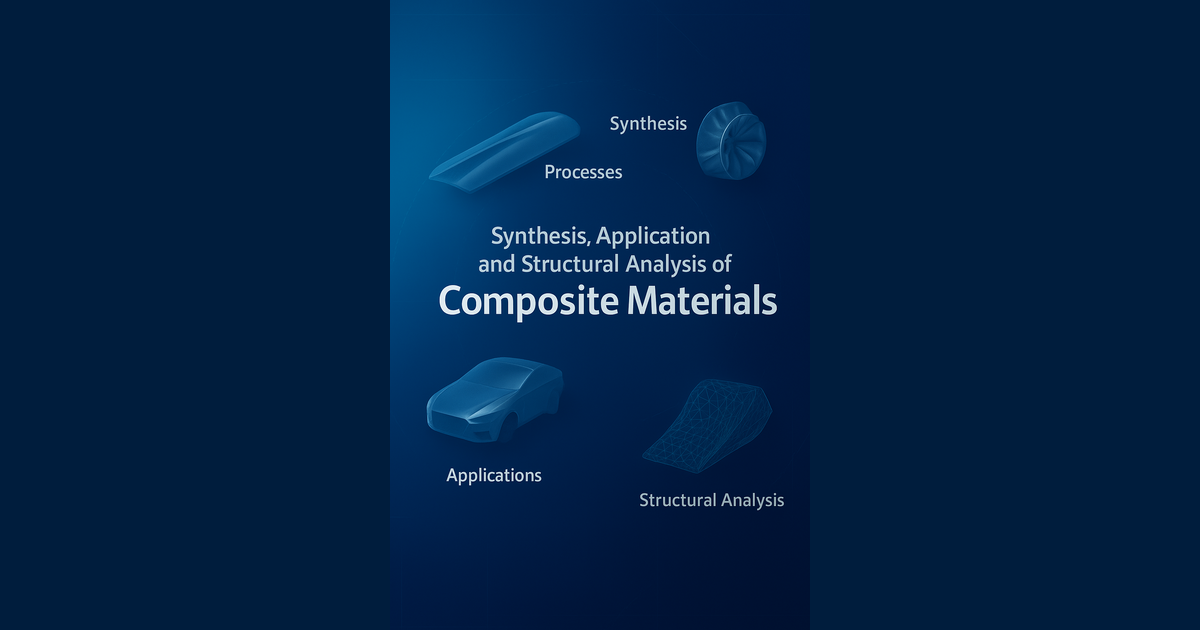- 2.8Impact Factor
- 5.5CiteScore
- 16 daysTime to First Decision
Synthesis, Application and Structural Analysis of Composite Materials
This special issue belongs to the section “Materials Processes“.
Special Issue Information
Dear Colleagues,
As the guest editor, my goal is to coordinate and promote cutting-edge research in “Synthesis, Application and Structural Analysis of Composite Materials”. This Special Issue is aimed at disseminating original studies, critical reviews and experimental work that contribute to the advancement of knowledge in areas such as the fabrication of innovative materials with tailored properties, capable of responding to the specific demands of various industries, such as electronics, biomedicine and renewable energy, thus driving the development of more efficient, sustainable and advanced technologies.
The vision is to provide a robust academic platform to experts to share their innovative research and, in turn, facilitate interdisciplinary dialogue between authors and readers from around the world.
I invite researchers, academics and industry professionals to submit their manuscripts to contribute to the enrichment of this Special Issue, which highlights emerging topics and future challenges in Synthesis, Application and Structural Analysis of Composite Materials.
Dr. Caleb Carreño-Gallardo
Guest Editor
Manuscript Submission Information
Manuscripts should be submitted online at www.mdpi.com by registering and logging in to this website. Once you are registered, click here to go to the submission form. Manuscripts can be submitted until the deadline. All submissions that pass pre-check are peer-reviewed. Accepted papers will be published continuously in the journal (as soon as accepted) and will be listed together on the special issue website. Research articles, review articles as well as short communications are invited. For planned papers, a title and short abstract (about 250 words) can be sent to the Editorial Office for assessment.
Submitted manuscripts should not have been published previously, nor be under consideration for publication elsewhere (except conference proceedings papers). All manuscripts are thoroughly refereed through a single-blind peer-review process. A guide for authors and other relevant information for submission of manuscripts is available on the Instructions for Authors page. Processes is an international peer-reviewed open access semimonthly journal published by MDPI.
Please visit the Instructions for Authors page before submitting a manuscript. The Article Processing Charge (APC) for publication in this open access journal is 2400 CHF (Swiss Francs). Submitted papers should be well formatted and use good English. Authors may use MDPI's English editing service prior to publication or during author revisions.
Keywords
- reinforcement synthesis
- material functionalization
- metal matrix composites
- carbides
- porous materials
- powder

Benefits of Publishing in a Special Issue
- Ease of navigation: Grouping papers by topic helps scholars navigate broad scope journals more efficiently.
- Greater discoverability: Special Issues support the reach and impact of scientific research. Articles in Special Issues are more discoverable and cited more frequently.
- Expansion of research network: Special Issues facilitate connections among authors, fostering scientific collaborations.
- External promotion: Articles in Special Issues are often promoted through the journal's social media, increasing their visibility.
- e-Book format: Special Issues with more than 10 articles can be published as dedicated e-books, ensuring wide and rapid dissemination.

